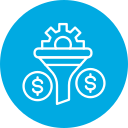What Heatmaps Reveal About Conversion Intent
Numbers say bounce, but heatmaps show the nervous dance before leaving: frantic clicks on dead elements, ignored CTAs, and scroll drop-offs right before critical benefits. Share a page you suspect is confusing, and we’ll decode it together.
What Heatmaps Reveal About Conversion Intent
Click maps spotlight desire and confusion, scroll maps expose content depth that actually gets seen, while move maps hint at reading intent. Combine them to identify misplaced CTAs, buried value props, and layout blind spots holding back conversions.
What Heatmaps Reveal About Conversion Intent
Funnels explain where users exit, but heatmaps reveal what made them uncomfortable before leaving. Use both to craft evidence-backed hypotheses, prioritizing fixes that reduce uncertainty and guide intent. Comment with your metrics mystery, and we’ll propose a visual check.





